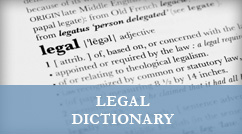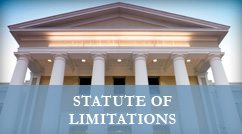Airplane Accidents
Commercial aviation accidents are among the most tragic and high profile of all modern disasters. Recent crashes in Grammatiko, Greece and western Venezuela are stark reminders of the ever-present dangers that accompany air travel. On August 16, 2005, more than 150 passengers and 8 crewmembers were killed when an airliner crashed over a remote area of Venezuela. The accident arose after pilots aboard the plane reported mechanical problems in both engines. Just two days earlier, a Greek airliner also crashed due to technical difficulties. That accident left more than one hundred passengers dead, including more than forty children. When crashes occur, lawsuits often arise where the negligence of others appears to be a contributing cause of the accident. The litigation surrounding airplane crashes is often complex and unique. In an airplane crash not involving an airline or other common carrier, the legal rules are usually very similar to those of an automobile accident. Unlike airline common carriers, which are held to a higher standard of care, owners and operators of private aircraft are required to exercise ordinary care in operating an aircraft. If an airline crash involves a common carrier, the right to recover damages depends upon whether the flight was domestic (within the United States) or international. International flights and the domestic portions of international flights are covered by two international agreements, the Warsaw Convention and the Montreal Protocol. Under these international agreements, the airlines are held strictly liable for injuries to passengers. This means that passengers on international flights and the domestic portions of international flights need not prove negligence in order to recover damages if an airline accident occurs. However, these agreements limit the amount of liability per passenger ($75,000 under the Montreal Protocol) unless the injured party can prove “willful misconduct” on behalf of the airline. Because of the $75,000 limit on damages imposed by the Warsaw Convention-Montreal Protocol, injured passengers (or those bringing suit on their behalf) may seek to show that an accident was caused by “willful conduct” on behalf of the airline, making the liability limits of the Warsaw Convention-Montreal Protocol inapplicable. For example, in the case of the bombing of a Pan American flight over Lockerbie, Scotland in 1988, a United States federal court held that the $75,000 limit did not apply because the failure of the airline to comply with anti-terrorist security procedures constituted “willful misconduct.” For cases not involving strict liability, proving negligence on the part of employees of the airline, the manufacturer of the aircraft, its component parts, or maintenance crews is difficult, particularly since records, data, and the cause of the crash may be inconclusive. There can be many causes of an aircraft accident, though usually the first cause examined is whether there was pilot error. Other causes of aircraft accidents include defective design or manufacture of the aircraft, failure to adequately maintain or repair the aircraft, failure of one or more of the component parts of the aircraft, and extreme weather conditions. The table below demonstrates the causes of major airline disasters for the last 50 years.
| Causes of Fatal Accidents by Decade (%) | |||||||
|---|---|---|---|---|---|---|---|
| Cause | 1950s | 1960s | 1970s | 1980s | 1990s | 2000s | All |
| Pilot Error | 40 | 32 | 24 | 25 | 27 | 25 | 29 |
| Pilot Error (weather related) | 11 | 18 | 14 | 17 | 21 | 17 | 16 |
| Pilot Error (mechanical related) | 7 | 5 | 4 | 2 | 4 | 3 | 4 |
| Total Pilot Error | 58 | 57 | 42 | 44 | 53 | 45 | 50 |
| Other Human Error | 0 | 8 | 9 | 6 | 8 | 9 | 7 |
| Weather | 16 | 10 | 13 | 15 | 9 | 8 | 12 |
| Mechanical Failure | 21 | 20 | 23 | 21 | 21 | 28 | 22 |
| Sabotage | 5 | 5 | 11 | 13 | 10 | 9 | 9 |
| Other Cause | 0 | 2 | 2 | 1 | 0 | 1 | 1 |
If it is determined that a basis for a lawsuit exists, a number of other complex issues then arise, such as:
- What law (federal or state) should be used?
- Where is the best forum for the trial?
- Should lawsuits be filed individually or as a class action?
- Who should be sued (the aircraft manufacturer, operator, or owner; the airport operator; corporate officers; or component part manufacturers)?
- What is the best theory of recovery (strict liability, negligence, breach of warranty, statutory provisions)?
- What is the best method of proving damages?
- How should evidence of the crash be preserved?
Related Content
- Airplane Accidents
- Causes of Airplane Accidents
- Common Carrier Liability
- Economy Class Syndrome
- Immediate Crash Investigation





